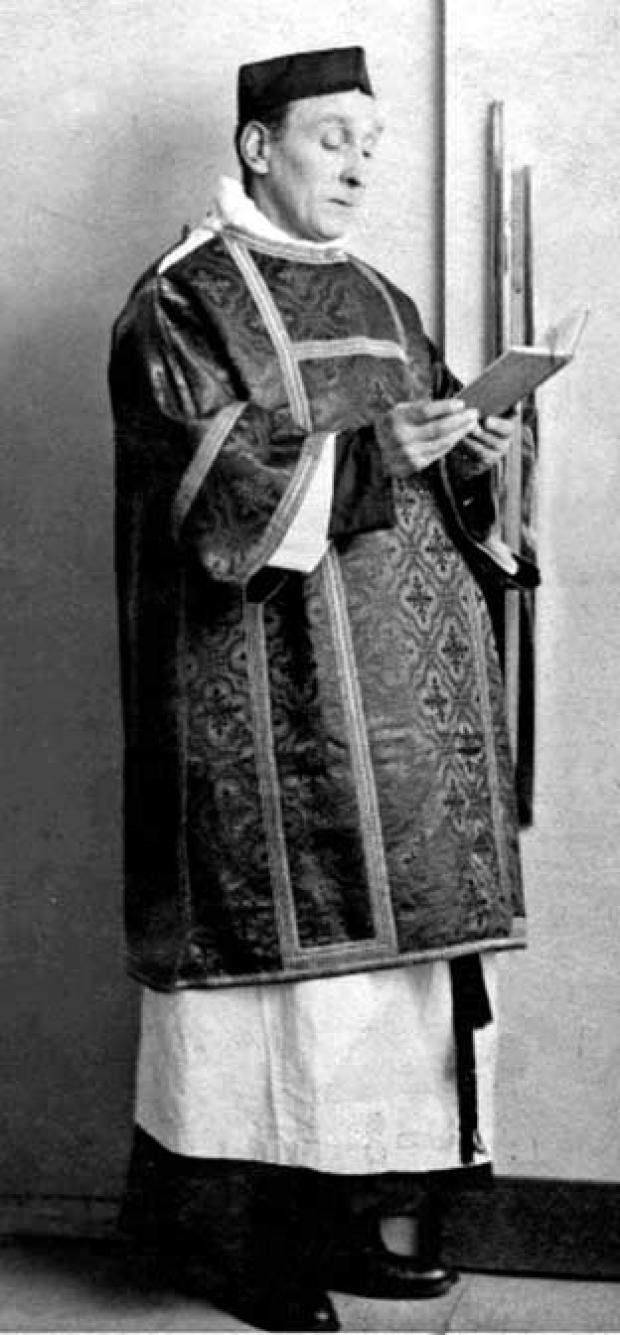Mr Smart from St Michael's Bedford Park in 1933 (from the Richmond & Twickenham Times) here illustrates the ambiguities of the role of the Subdeacon. The reason I was thinking of these ambiguities was finding a role for our retired priest, Jack, in the Christmas services as he is a bit wobbly at the moment. He could subdeacon at the Midnight, we thought - but what does a subdeacon actually do? Look up the standard liturgical authorities such as The Parson's Handbook or Ritual Notes and the answer seems to be many functions which are now normally done by laypeople, and nothing specifically applying to a person in holy orders. Anglicanmemes.com very clearly states that what a subdeacon does is 'Mostly just stand around being fantastic'.
The fact that nothing that the subdeacon does is a specifically clerical function is reflected in the confusion regarding what the subdeacon is. In the Western Church, it developed into one of the Major Orders, separated from the Minor Orders such as Lector and Doorkeeper, while in the East it remained connected with them in the list of Minor Orders. However clergy hardly if ever remained at the level of Subdeacon, and when there was one in a Solemn High Mass the role was almost invariably taken by someone in priest's or deacon's orders; except when, in the Anglican Church after the Catholic Revival, a layperson such as Mr Smart here illustrated did it. I remember at my old church in High Wycombe when I acted as MC for Mass I occasionally wore the subdeacon's tunicle, I think entirely incorrectly as there was no deacon taking part.
The range of liturgical bits and pieces which are traditionally the subdeacon's province - crucifering, reading the Epistle, holding the Gospel book, preparing the vessels and performing the ablutions for the celebrant - are, as I say, nothing specifically clerical and are normally nowadays distributed among a range of lay servers. That makes it hard to probe through the smoke of liturgical history and try to uncover a proper Catholic understanding of why one might bother to have a subdeacon at all. I suspect, having done a bit too much thinking about it, that this confusion of status and function is actually the purpose of it. The transitional nature of the Subdeacon, caught somewhere between the lay and the ordained state, makes the point that clergy are not different sorts of human beings from laypeople, but represent the functions and calling of the whole people of God, nowhere dramatised as effectively as in the Liturgy itself: ironically, though typically in the history of religion, perhaps the opposite meaning to the one it came to embody. Does that, I wonder, make sense?
NOTE: I decided to look up Mr Smart's old church, St Michael, Chiswick, and found a moderately Anglo-Catholic church with two people on the staff they describe as subdeacons, quite distinct from their Reader (although I see that both subdeacons are on the preaching rota), Sacristan, and MC. Obviously a local tradition - but I wonder what the thinking is behind having this separate category of people.
Subscribe to:
Post Comments (Atom)


No comments:
Post a Comment